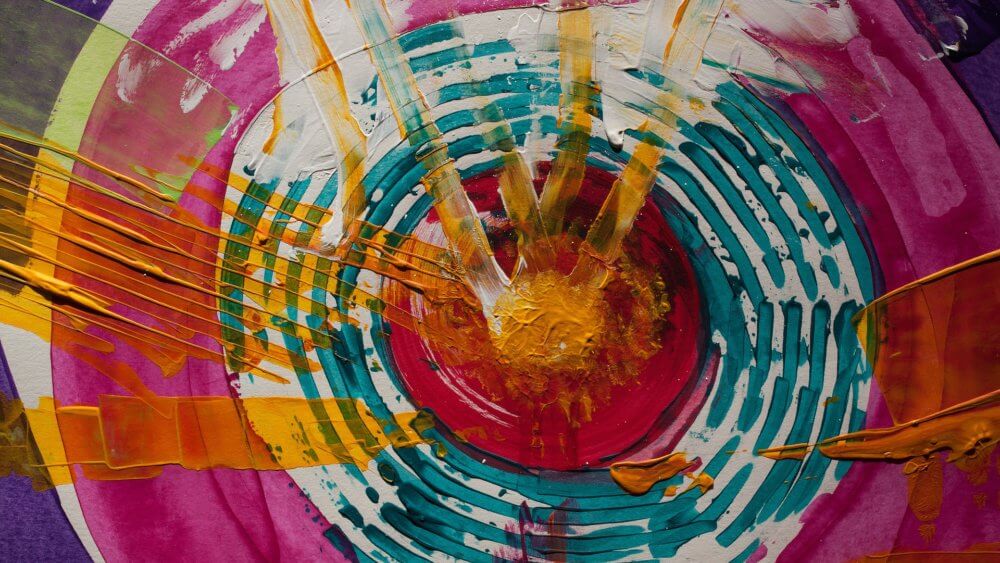The Healing Garden is pleased to offer our clients access to various forms of psychological therapy from group support, to individual counseling, to art therapy. We recently sat down with Max Roberts, Healing Garden Intern and Lesley University Master’s Student, to understand the benefits of art therapy and learn how it can offer people with cancer a way to express emotions and experiences that are inaccessible through verbal language. If you are looking for emotional support during or after cancer treatment and want to access your innate creativity, art therapy might be helpful for you.
***

Max is a clinical intern at the Healing Garden from September of 2018 to May of 2019. Max leads support groups, art therapy groups, and provides individual
***
Q: What is art therapy?
A: Art Therapy is a mental health profession that uses art materials (e.g. clay, ink, watercolor, paint, photography, etc.) and creative processes within a framework of human developmental and psychological theory, to support people through life’s challenges and to promote well-being. All art therapists are masters or doctoral-level clinicians who have completed an extensive amount of supervised clinical and academic training. Many art therapists identify as artists as well as trained therapists, and typically integrate their dual identity of artist-therapist into their clinical approach with clients.
If you’re interested in learning more, check out the American Art Therapy Association’s (AATA) website!
Q: What do you do in an art therapy session?
A: No two art therapy sessions are the same. There may be an ongoing art process that a client is working on across multiple sessions, or a new art process will be offered by the therapist to address a specific clinical goal each session. Sometimes, no art is made at all. Art therapists are trained with the skills to support clients through both verbal and nonverbal communication. Consistent across all art therapy is the importance of the therapeutic relationship between the therapist and client – it is within this relationship that art therapy happens.
When art is made in session, the artwork and process might be discussed symbolically or metaphorically in relation to a client’s life situation. The art therapist may ask questions to help the client better understand their own art and what they can learn from it, but therapists cannot tell a client what their art ‘means’.
Q: Do you have to be an artist to engage in Art Therapy?
A: No, not at all! Some people haven’t used art materials in years and might initially be self-conscious about their art making abilities. This is typical. Art therapists strive to be non-judgmental, and to model this perspective for clients. Art therapy is not about producing aesthetically pleasing art, but about engaging in a creative process that has personal meaning for the client and can promote healthy, adaptive psychological processes (e.g. flexibility, containment, insight, mindfulness, perspective, spontaneity, etc.) targeted to help clients meet their goals.
To get started with someone who is uncomfortable making art, an art therapist might ask them to close their eyes and scribble – just get marks down and they can use the scribble as a jumping off point. Art therapists are artist-therapists who understand the developmental process of art-making, so they will introduce artistic processes in safe, achievable ways. That might mean providing technical support and giving instructions in small, manageable steps.
Q: How can cancer patients specifically benefit from Art Therapy?
A. Art therapy has long been considered a low-risk, mind-body approach to psychological and spiritual healing for people with medical illnesses. Art therapy for adults and children with cancer is well researched. The mechanisms underlying why art therapy benefits this group of people are not totally clear and depend on the individual and context. One potential benefit is that art therapy offers people with cancer a way to express emotions and experiences that are inaccessible through verbal language. The art therapy process may enable people to create both literal and psychological distance from their complex internal experiences and gain a sense of control. Cancer and treatment often create conflicting emotions and uncomfortable somatic experiences. Art therapy provides an outlet of expression for these thoughts, feelings, and sensations, and a way to step back, view, and discuss this complex emotional terrain with a therapist. Some research suggests that certain art-making processes elicit a relaxation response in the brain. Art making can also elicit a ‘flow’ state, which is a type of present-moment focus during which distractions and stressors – like thoughts about cancer and somatic experiences associated with treatment side effects – fade into the background.
Q: Max, what personally draws you to this work?
A: Cancer has unfortunately touched the lives of nearly everyone in some way through self, family, or friends, and I am no exception. I therefore have both a personal and professional interest in supporting people through and beyond their experience with cancer. As for art therapy, I have always identified as an artist, and have a passion for the science and practice of psychology. It wasn’t until I began training in mental health counseling and art therapy that I realized I had been using my own art practice as a therapeutic process long before I knew what that meant. Art is something humans have turned to for communication for thousands of years, and can capture and express human experiences in ways that, in my opinion, are beyond the capacity of verbal language.


This is a wonderful blog. Max is a very intuitive, kind and creative clinician clinician.
Max sparked my return to art which I hadn’t done since childhood. His offerings opened for me the creative and whole energy I had at that time. Now art is a daily grounding practice that centers me and brings me stillness. Despite my initial apprehension, it was Max’s gentle encouragement and reverence for what I created that initiated this.